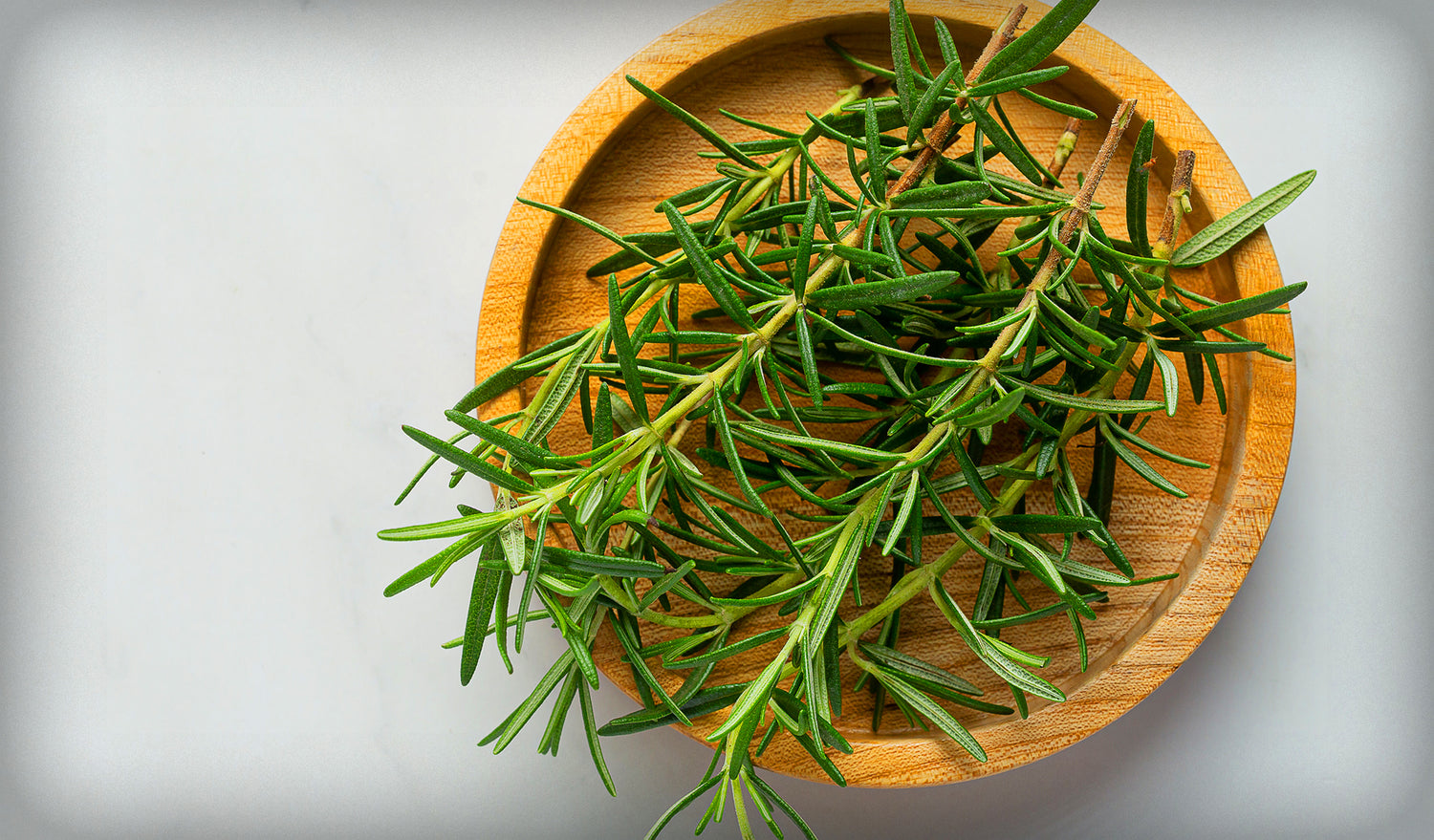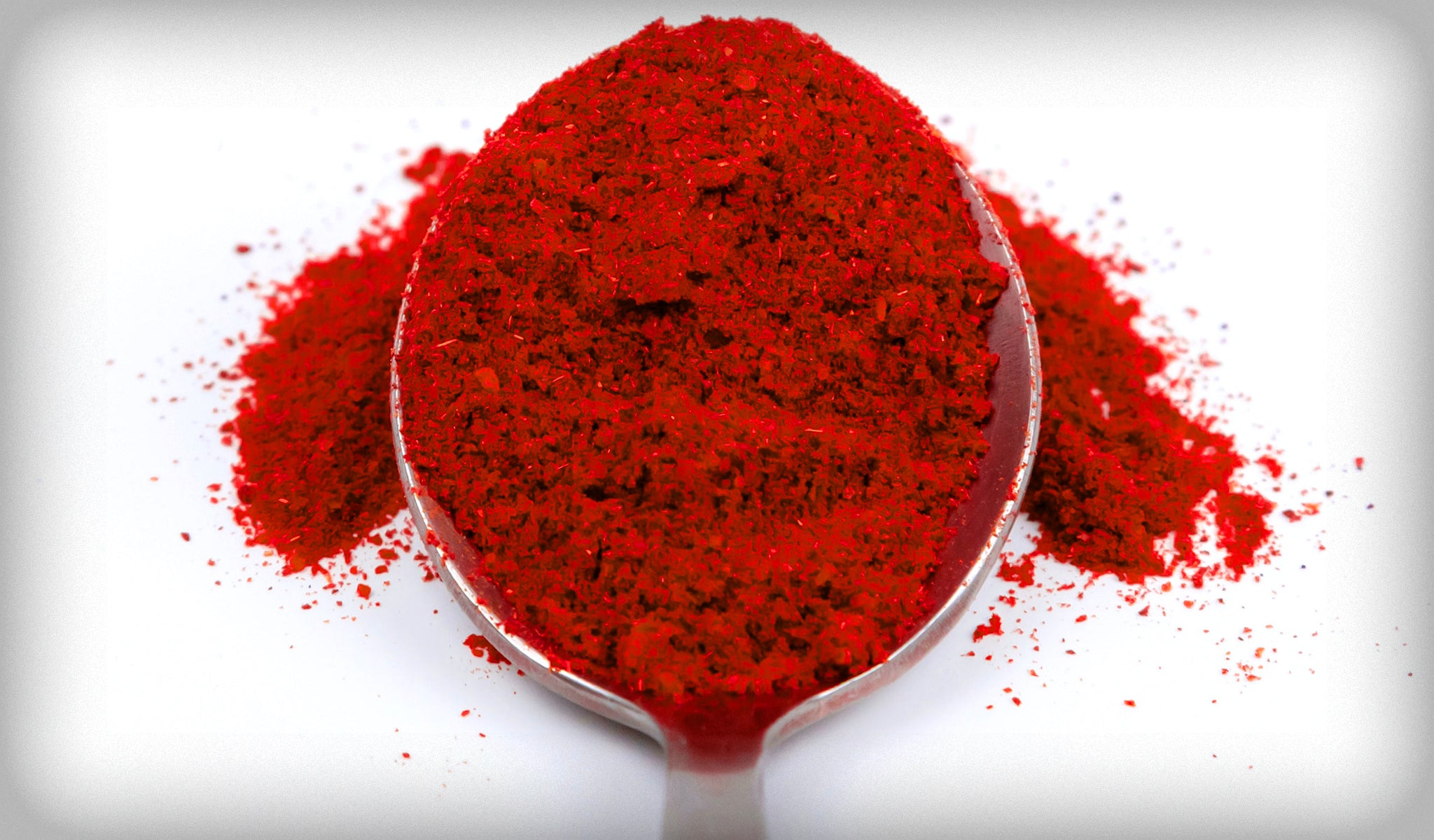ROSEMARY
Rosemary (Rosmarinus officinalis) is another member of the mint family, although it has a much different appearance in that it is an evergreen shrub that can grow quite large and has an ash-colored scaly bark and short leaves that look like flat pine tree needles with a deep, sage green color on the top and a silver-white color on the underside. The purple flowers are very small. The leaves are the portion of the plant that is most commonly used.
The taste and aroma of the herb rosemary, were historically used for strengthening the memory. Rosemary’s name means “dew of the sea” and it has a pinelike flavor that is counterbalanced by a rich pungency, a unique combination that evokes both the deep forest and the open sea. Its memorable flavor makes it an essential herb every place food is prepared.
HISTORY
Originally found in Mediterranean regions, rosemary is now cultivated throughout much of the temperate regions of both Europe and America. Rosemary was a revered culinary herb and natural medicine in both ancient Greece and Rome from 500 B.C.E. Rosemary‘s popularity came in part from the widespread belief that Rosemary stimulated and strengthened the memory, an attribute for which it is still traditionally used. In ancient Greece, to stimulate thoughts and memory, students would place rosemary sprigs in their hair while studying for exams. Mourners would often throw the fragrant herb into the grave of the deceased as a symbol of remembrance. In England, rosemary‘s ability to strengthen the memory transformed it into a symbol of fidelity, and as such, it played an important role in wedding customs, decorations, and gifts.
Rosemary oil was first extracted in the 14th century and subsequently was used to make Queen of Hungary water, a popular cosmetic of the time. In the 16th and 17th centuries, rosemary became popular as a digestive aid in apothecaries and other places medicines were sold. As modern research learns more about the beneficial active components in rosemary, we learned that they were correct about many of the beliefs about beneficial effects on human physiology.
HEALTH BENEFITS
Due to its high essential oil content, rosemary has many effects similar to those of other mints. Rosemary, however, is considered more of a stimulant than other mints. In fact, rosemary oil contains several potent antioxidants, so powerful that an extract of rosemary is being investigated for use as a natural alternative to synthetic antioxidants that are often added to food preservatives.
One of the chief antioxidants in rosemary is rosmarinic acid. Studies have shown that this compound can act to reduce inflammatory responses by altering the concentrations of inflammatory messenger molecules, such as leukotriene B4, making rosemary potentially useful for people with inflammatory conditions, such as rheumatoid arthritis, as well as bronchial asthma and Atherosclerosis.
Rosemary also contains substances such as flavonoids and volatile oil that are useful for stimulating the immune system, increasing circulation, and improving digestion. Rosemary has been shown to increase the blood flow to the head and brain, thus improving concentration, too.
SELECTION & STORAGE
Whenever possible, choose fresh rosemary over the dried form of the herb, since it is far superior in flavor. The sprigs of fresh rosemary should be deep sage green in color and free of yellow or dark spots. Fresh rosemary should be stored in the refrigerator either in its original packaging or wrapped in a slightly damp paper towel for up to one week. You can also place the rosemary sprigs in ice cube trays covered with either water or stock that can be added when preparing soups or stews. Frozen rosemary will last for three months.
If fresh rosemary is not available, choose dried. As with other herbs, when purchasing dried rosemary, choose organically grown rosemary, since organically grown herbs are much less likely to have been irradiated. Dried rosemary should be kept in a tightly sealed container in a cool, dark, dry place, where it will remain fresh for about six months.
TIPS FOR USE
Quickly rinse fresh rosemary under cool running water and pat it dry. Most recipes call for rosemary leaves, which can be easily removed from the stem. Alternatively, you can add the whole sprig to season stews, soups, and meat dishes, then remove it before serving.
Rosemary imparts a piney, sweet, somewhat pungent flavor to many foods, particularly roasted meats, soups, and vegetables.
RESOURCES
- The Encyclopedia of Healing Foods by Michael Murray, ND



